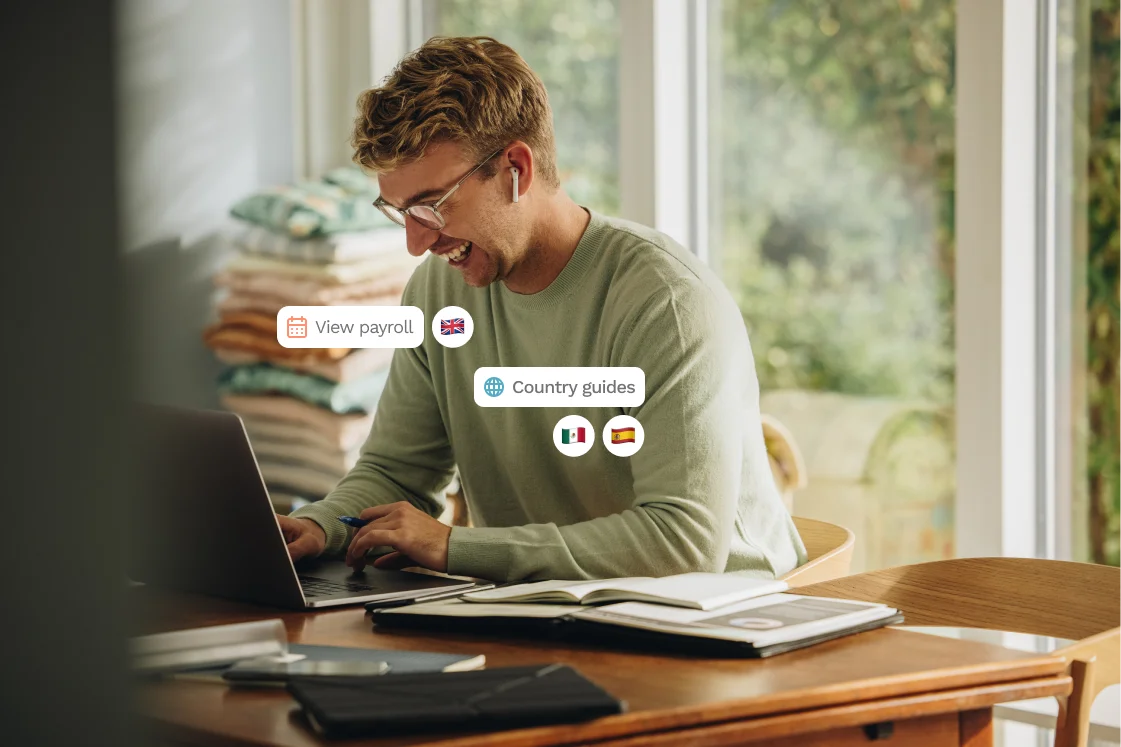When hiring internationally, companies need to know and comply with the relevant laws and regulations for each specific country or jurisdiction. This might pertain to job posting requirements, interviews, background checks, fitness tests, and more. Ideally, the hiring process should be planned and structured in a way that ensures compliance in order to minimize legal risk.
But compliance shouldn’t be just a box to check. Building and implementing hiring practices that are fair, consistent, and unbiased will not only help avoid legal claims, but also make the hiring process faster and more efficient, and ensure that you find the best candidate for the role. And that’s what really matters—having the right people in the right roles is important for employee well-being and productivity, and will lead to a positive impact and positive outcomes for the business.
In a recent webinar hosted by CodeSignal, their CEO Tigran Sloyan was joined by Miranda Zolot, General Counsel at Oyster, and Sylvia Mol, Head of the Skills Evaluation Lab at CodeSignal, to discuss the challenges of hiring compliance and how to overcome them. Their conversation highlighted the fact that compliant hiring practices often translate to best practices for successful hiring, which ultimately contributes to business success.
Identify the skills needed for the role
Before posting a job, it’s best to start by defining the role as clearly as possible—identifying the skills and competencies required, as well as the expectations for performance, and having it all documented. From a legal standpoint, clearly communicating expectations at the outset can head off potential issues, such as the risk of litigation if there are performance issues later on.
But beyond minimizing risk, clarifying and communicating the job requirements helps ensure a good match between the role and the applicants to that role. When a candidate is hired, it helps set everyone up for success because both the candidate and the company know exactly what’s required on the job. It’s also helpful when it’s time to do performance reviews, because the manager can easily refer back to a clearly defined set of requirements and expectations.
Zeroing in on the skills required can also help reduce barriers to entry and open up the talent pipeline to people who might otherwise be excluded. For instance, is a college degree actually necessary or critical for a particular role? Hiring managers should ask themselves what job-relevant skills are actually necessary and how they define success. Honing in on the necessary skills, knowledge, and characteristics, and removing irrelevant or unnecessary requirements or qualifications, will open up access to a wider talent pool and help you find the perfect candidate for the role.
Assess job-relevant skills using objective measures
Once you’ve identified the specific skills needed for a particular role, you can design interviews and assessments that are directly relevant to measuring the candidate’s abilities in those specific areas. If there are inconsistencies, such as a disconnect between what’s being asked in an interview or assessment and what’s actually required for the job, that opens up another area of potential risk. For this reason, it should be obvious to candidates upfront that the interview questions and assessment tasks are clearly job-relevant.
Shifting from a compliance perspective to a hiring success perspective, consider the benefits of this approach. By designing interviews and assessments to measure the skills that are actually needed for the job on a day-to-day basis, the hiring manager will gain a much better understanding of whether the candidate will be successful in the role. As for applicants, the clarity and fairness of the assessment criteria will ensure a better candidate experience as they move through the process.
Assessing job-relevant skills also makes it possible to use clearly defined criteria and frameworks to screen candidates and measure their performance more objectively in interviews or take-home assessments. If the screening or filtering is done by tools rather than humans, it further reduces the possibility of bias creeping in. Relying on objective measures, frameworks, and tools not only reduces the risk of discrimination, but also makes the process faster and more efficient, which results in cost savings for the company.
Create a consistent hiring process
It’s important to design and implement a well-structured and consistent hiring process so that all candidates are treated exactly the same as they move through the process. It’s human nature to want to trust one’s gut instinct when evaluating a candidate, but that’s how human bias gets introduced, even if it’s unintentional. If candidates are treated differently, whether by the same interviewer or different interviewers, it opens up the possibility of discrimination claims or adverse impact claims, so consistency is key.
A consistent hiring process ensures that all candidates are treated in a fair and equitable way at every step of the process—they’re asked the same questions, given the same tests or tasks, and measured, scored, or rated using the same criteria. This keeps the focus on the skills and competencies needed for the role, and gives every candidate an equal chance at success. The more detailed, structured, and consistent the process, the easier it becomes to move candidates through the funnel, and to screen and filter more efficiently and objectively.
Another example of a consistent process would be to always make sure the candidates’ names are taken off their applications. If an applicant includes a headshot in their CV because it’s common practice in their country, that too should be removed. Again, the idea is for everyone to be treated equally and assessed solely on their skills and competencies. Finally, if a candidate is not being moved forward, the hiring manager should document an objective reason for why they didn’t fit the criteria. This mitigates risk, but more importantly, it ensures a fair process for everyone.
Understand cultural norms and expectations
Sometimes, what’s most challenging is not the laws and regulations themselves, but the cultural norms and expectations around how people work in any given country. For instance, how a workweek is defined legally may be different from the reality of how people actually work in that country or region. One way to understand what’s culturally expected or customary is to work with local recruiters or talk to colleagues who have operations there.
It’s helpful to have insight into culture-specific norms in order to ensure a fair interview process as well as a successful hire. For instance, from a candidate’s perspective, asking about vacation time might be perfectly normal and commonplace, and it’s important to know that so the interviewer doesn’t rate them lower thinking they won’t give 100% at work. An understanding of cultural contexts can help avoid these kinds of mistakes due to cultural misunderstandings. Most importantly, it will set the candidate up for success on the job, so they can be an asset to your organization.
From compliance to company success
While compliance is an essential part of global hiring, and will protect your business from unnecessary risk, it shouldn’t be thought of as merely an obligation to fulfill. In fact, building compliant processes will not only minimize risk, but also improve your hiring process, and make it more fair, consistent, and efficient. It’ll result in a better candidate experience, help you evaluate applicants in terms of what’s really required in the business, and ultimately find a candidate who will thrive in the role and help elevate your organization. That’s the real benefit—successful hiring that will help take your company to the next level.
To learn more about overcoming the challenges of hiring compliance, watch the full webinar.

About Oyster
Oyster is a global employment platform designed to enable visionary HR leaders to find, engage, pay, manage, develop, and take care of a thriving distributed workforce. Oyster lets growing companies give valued international team members the experience they deserve, without the usual headaches and expense.
Oyster enables hiring anywhere in the world—with reliable, compliant payroll, and great local benefits and perks.








